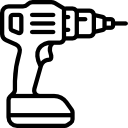- اتو لوله سبز
- اره پروفیل بر
- اره عمودبر (اره چکشی)
- اره فارسی بر
- اره گرد (اره دیسکی)
- اره مویی
- اره میزی
- اره نواری (گوشت بری)
- اره همه کاره (افقی بر)
- ابزار چندکاره
- بالابر برقی
- بتن ساب و موزایک ساب
- بکس برقی
- پیچگوشتی برقی
- پیستوله برقی
- بیسکویت زن
- چکش تخریب
- دمنده/مکنده (بلوور)
- دریل بتن کن
- دریل ساده (سرکج)
- دریل ستونی
- دریل ضربه ای/چکشی
- دریل مغناطیسی (مگنتی)
- دریل نمونه بردار (کرگیر)
- دستگاه جوش
- رنده و فرز نجاری
- سنباده برقی
- سشوار صنعتی
- سنگ دوطرفه (چرخ سنباده)
- سنگ و پولیش
- شیارزن و مرمربر
- فرز مینیاتوری
- فرز انگشتی
- میخکوب و منگنه کوب
- مینی سنگ
The Role of Proper Ventilation in Creating a Healthy Kitchen Environment
Creating a comfortable space in a culinary area goes beyond aesthetics and design. Proper kitchen airflow is a critical aspect that significantly impacts not only the ambiance but also the health of those who spend time cooking and gathering. Efficient air circulation works to minimize excess humidity, smoke, and lingering odors, ensuring a pleasant atmosphere for cooking and dining.
Investing in suitable air circulation systems not only enhances cooking experiences but also contributes to maintaining a hygienic environment. For those interested in exploring different solutions, tips and options are readily available to help homeowners take charge of their kitchen’s air quality. Understanding the mechanisms and benefits associated with proper airflow can transform any cooking space into a safer and more enjoyable environment.
How Proper Air Circulation Reduces Cooking Odors and Smoke
Effective air movement in culinary spaces plays a significant role in minimizing unpleasant smells and smoke generated during cooking. Utilizing reliable exhaust systems can drastically improve the overall atmosphere, ensuring that air quality remains acceptable for everyone present. Proper installation tips can help homeowners select the best options tailored to their specific environments.
Consistent maintenance practices are crucial for keeping these systems functioning optimally. Regular cleaning prevents grease buildups that can contribute to foul odors and poses safety hazards. Addressing odor removal swiftly enhances both comfort and health–clean air contributes to a pleasant cooking experience free from lingering scents.
Implementing grease control strategies alongside effective airflow not only boosts air cleanliness but also protects against potential fire hazards. Maintaining a fresh environment in culinary spaces is paramount; therefore, understanding the interplay between cooking emissions and air quality is vital for any home chef.
Choosing the Right Ventilation System for Your Kitchen Size
Selecting an appropriate exhaust system tailored to your cooking space is crucial for maintaining air quality and grease control. Whether you have a compact kitchen or a spacious culinary area, understanding the requirements of your setup can lead to better odor removal and overall comfort. Explore more about the different options available here.
For smaller cooking environments, under-cabinet hoods or wall-mounted units can effectively manage smoke and smells without overwhelming the space. These compact solutions provide adequate airflow while maintaining a sleek aesthetic. Conversely, larger areas may benefit from ceiling-mounted hoods or island hoods that offer increased coverage and capacity to handle more substantial cooking activities.
Installation tips should include ensuring proper ducting and making allowances for sufficient airflow. Adequate fan power is necessary to expel hot air and odors efficiently. Safety considerations must also be addressed, particularly concerning electricity and gas connections, to prevent hazards. Regular maintenance of the system is essential to guarantee optimal performance and prevent buildup of grease.
Don’t miss out — check out https://fantasticair.net/ and spin the reels for big wins.
By taking into account kitchen size, aesthetic preferences, and functional requirements, you can enhance air quality significantly while enjoying your culinary endeavors.
Maintenance Tips for Ensuring Optimal Kitchen Airflow
Regular upkeep of air circulation systems is crucial for achieving maximum efficiency and optimal air quality in your cooking area. Proper maintenance practices not only enhance odor removal but also extend the lifespan of exhaust systems. Begin by conducting routine inspections to identify potential blockages or accumulated grease that may hinder airflow.
Cleaning filters is a vital part of maintaining kitchen airflow. Depending on the type of system, filters should be washed or replaced every few months. This simple task reduces strain on the exhaust system and ensures effective performance. Additionally, examine ducts for any obstructions or leaks, which can compromise the ability to vent smoke and odors effectively. Installation tips, such as ensuring a straight duct path without unnecessary bends, can also improve overall efficiency.
Consideration for safety is paramount. Confirm that all electrical components are functioning correctly, and be on the lookout for any signs of wear or damage. Prioritize a well-maintained setup to support not just functionality, but also the health of those using the space. By following these guidelines, you’ll help create a pleasant cooking environment by maximizing air movement and minimizing unpleasantness.




